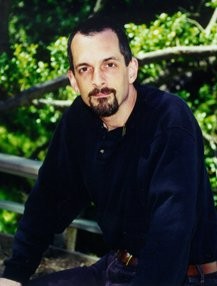-
(b.) - ?1959 October 31
Bio/Description
An American writer known for his works of speculative fiction, he explores areas such as mathematics, cryptography, philosophy, currency, and the history of science. He also writes non-fiction articles about technology in publications such as Wired. He has worked part-time as an advisor for Blue Origin, a company (funded by Jeff Bezos) developing a manned sub-orbital launch system, and is also cofounder of Subutai Corporation, whose first offering is the interactive fiction project The Mongoliad. Born in Fort Meade, Maryland, he came from a family of engineers and hard scientists; his father is a professor of electrical engineering whose father was a physics professor; his mother worked in a biochemistry laboratory, while her father was a biochemistry professor. His family moved to Champaign-Urbana, Illinois, in 1960 and then in 1966 to Ames, Iowa, where he graduated from Ames High School in 1977. He studied at Boston University, first specializing in Physics, then switching to Geography after he found that it would allow him to spend more time on the university mainframe. He graduated in 1981 with a B.A. in Geography and a minor in Physics. Since 1984, he has lived mostly in the Pacific Northwest and currently resides in Seattle with his family. His first fictional novel, The Big U, published in 1984, was a satirical take on life at American Megaversity, a vast, bland and alienating research university beset by chaotic riots. His breakthrough came in 1992 with Snow Crash, a novel in the late cyberpunk or post-cyberpunk tradition fusing memetics, computer viruses, and other high-tech themes with Sumerian mythology, along with a sociological extrapolation of laissez-faire capitalism and collectivism. Snow Crash can be considered to be the first expression of his mature style. He would later be described by Mike Godwin as "a slight, unassuming grad-student type whose soft-spoken demeanor gave no obvious indication that he had written the manic apotheosis of cyberpunk science fiction." In 1994, he joined with his uncle, J. Frederick George, to publish a political thriller, Interface, under the pen name "Stephen Bury"; they followed this in 1996 with The Cobweb. His next solo novel, published in 1995, was The Diamond Age: or A Young Lady's Illustrated Primer, which dealt with a future with extensive nanotechnology and dynabooks. This was followed by Cryptonomicon in 1999, a novel concerned with concepts ranging from computing and Alan Turing's research into codebreaking and cryptography during the Second World War at Bletchley Park, to a modern attempt to set up a data haven. It has subsequently been reissued in three separate volumes in some countries, including in French and Spanish translations. In May 2010, the Subutai Corporation, of which he was named Chairman, announced the production of an experimental multimedia fiction project called The Mongoliad, which centered around a narrative written by him and other speculative fiction authors. REAMDE, a play on the common filename README, is a novel he released on September 20, 2011. In this book, he returns with a thriller set in the present with a plot that involves a medley of game developers, Chinese cyber-criminals, Russian mafia, and other stranger inhabitants of the new global village. He is quoted as saying, "The science fiction approach doesn't mean it's always about the future; it's an awareness that this is different." He has also written non-fiction. In The Beginning Was The Command Line, an essay on operating systems including the histories of and relationships between DOS, Windows, Linux, and BeOS from both cultural and technical viewpoints and focusing especially on the development of the Graphical User Interface, was published in book form in 2000. His books tend to have elaborate, inventive plots drawing on numerous technological and sociological ideas at the same time. This distinguishes him from other mainstream science fiction authors who tend to focus on a few technological or social changes in isolation from others. The discursive nature of his writing, together with significant plot and character complexity and an abundance of detail suggests a baroque writing style, which he brought fully to bear in the three-volume Baroque Cycle. His book The Diamond Age follows a simpler plot but features "neo-Victorian" characters and employs Victorian-era literary conceits. In keeping with the baroque style, his books have become longer as he has gained recognition. In Turing's Cathedral by George Dyson he is credited, along with many other supporters, with giving the author access to documents, "…that were deposited when the digital universe was taking form."
-
Date of Birth:
1959 October 31 -
Gender:
Male -
Noted For:
Writer of a non-fiction work, "In The Beginning Was The Command Line", an essay on operating systems including the histories of and relationships between DOS, Windows, Linux, and BeOS -
Category of Achievement:
-
More Info:


